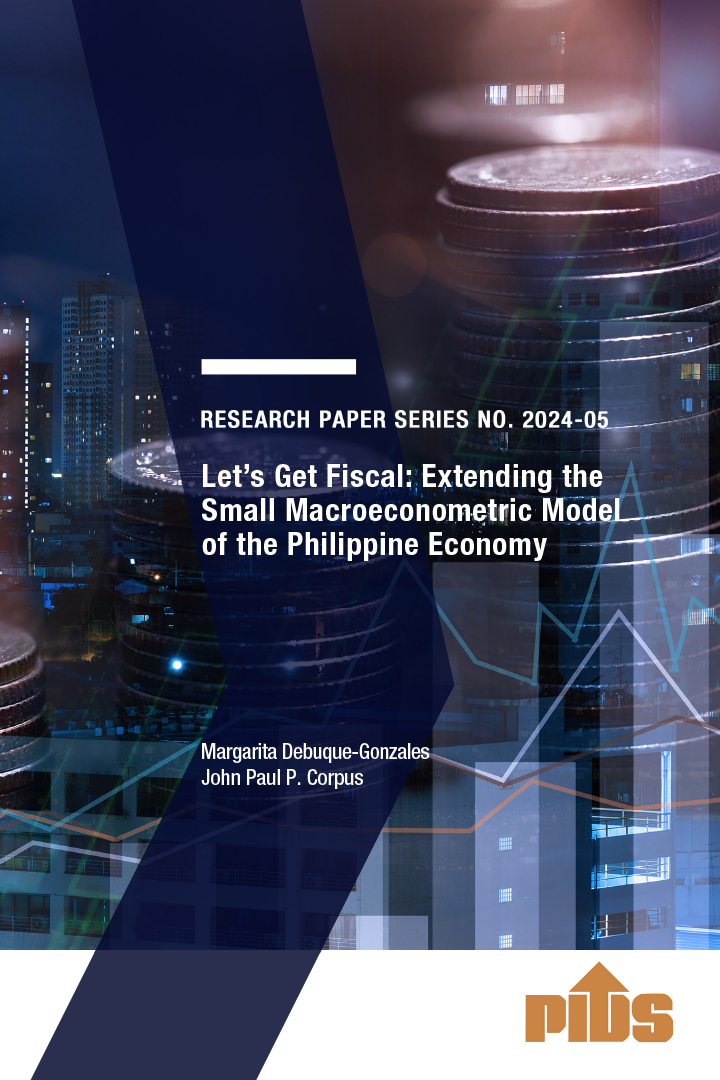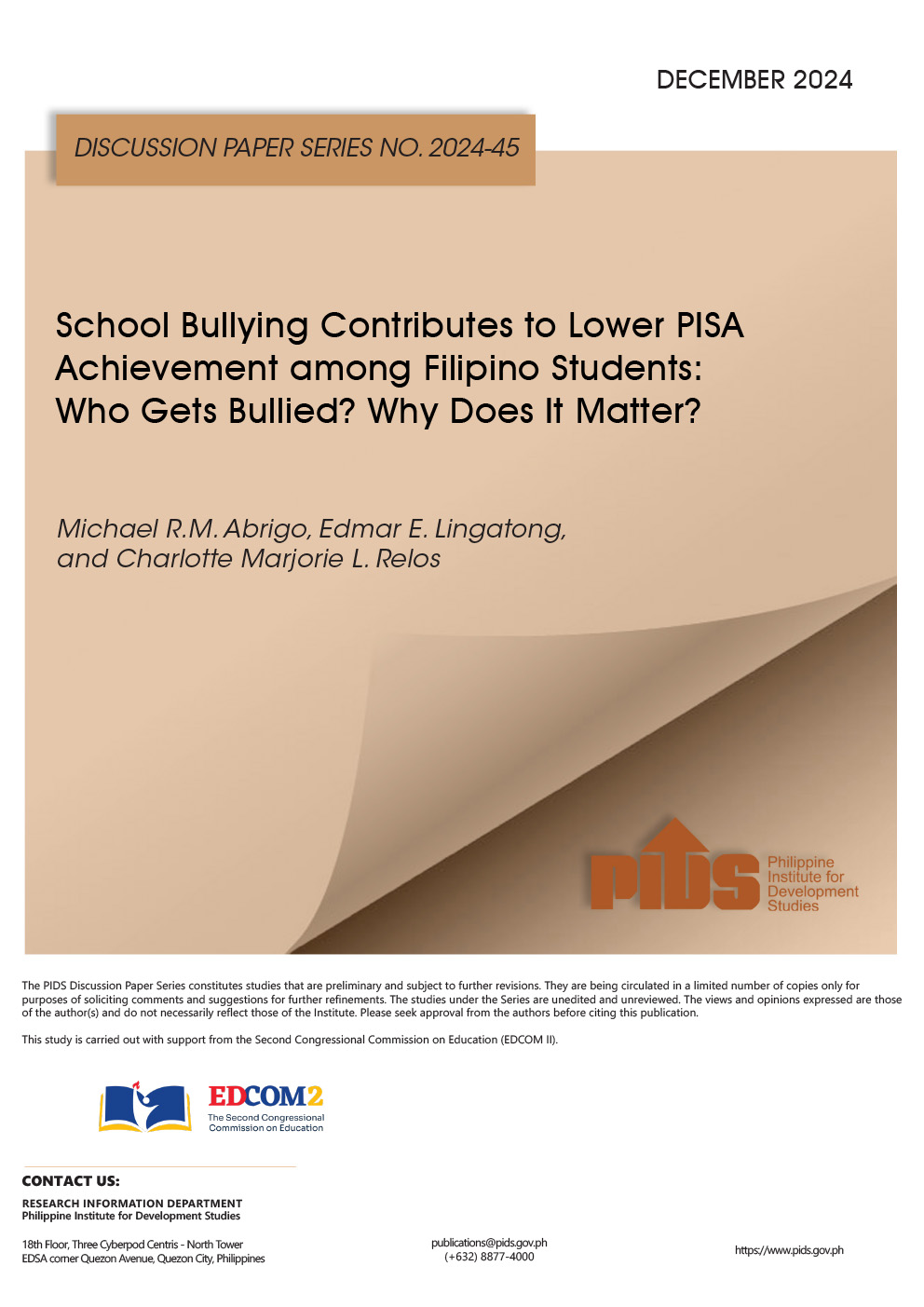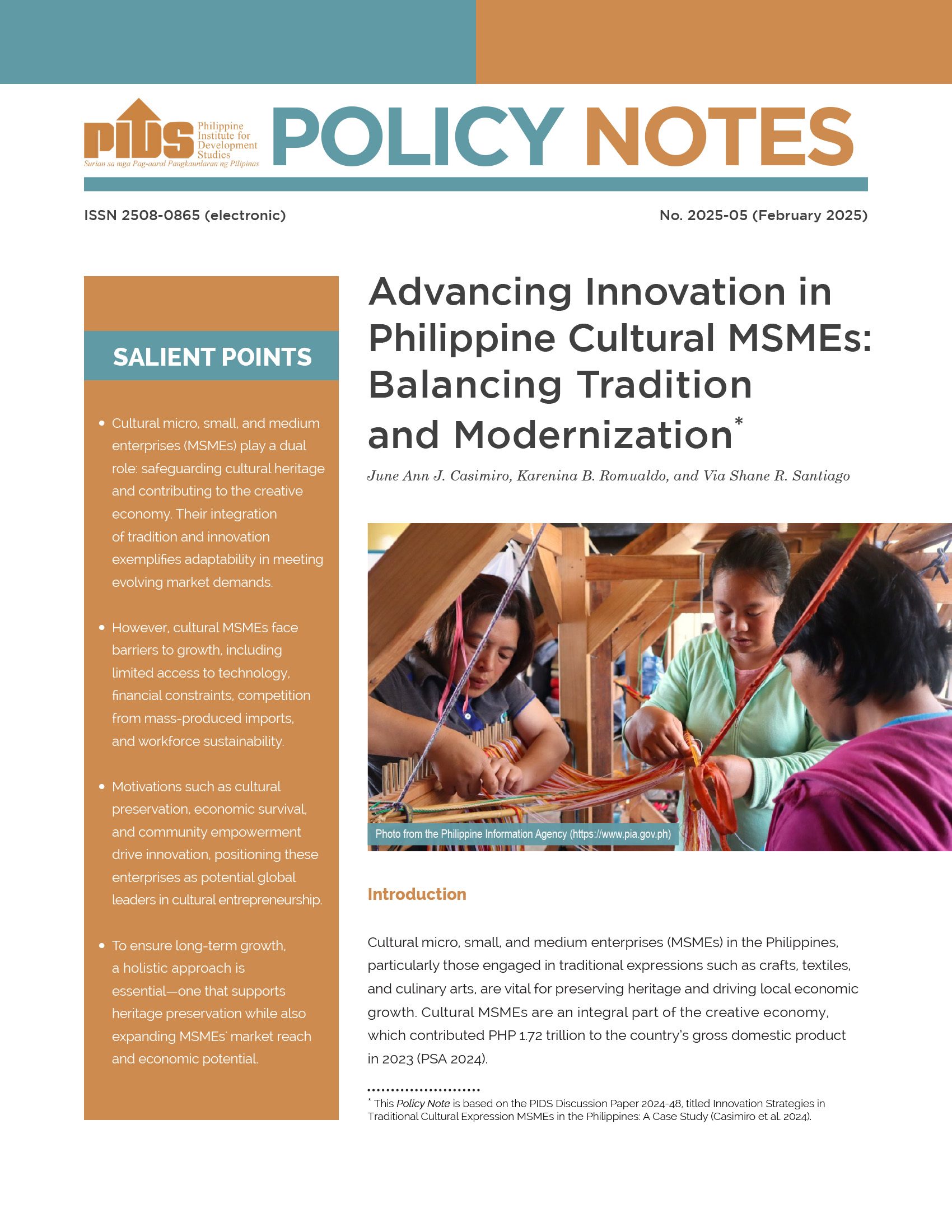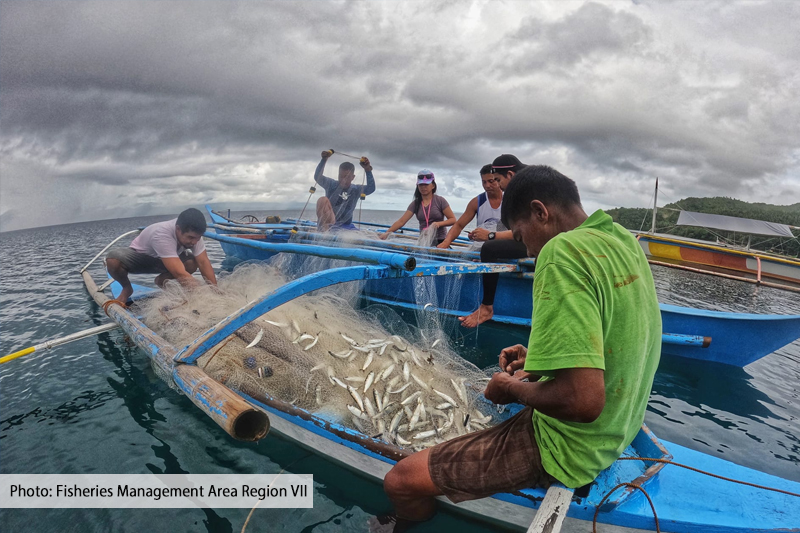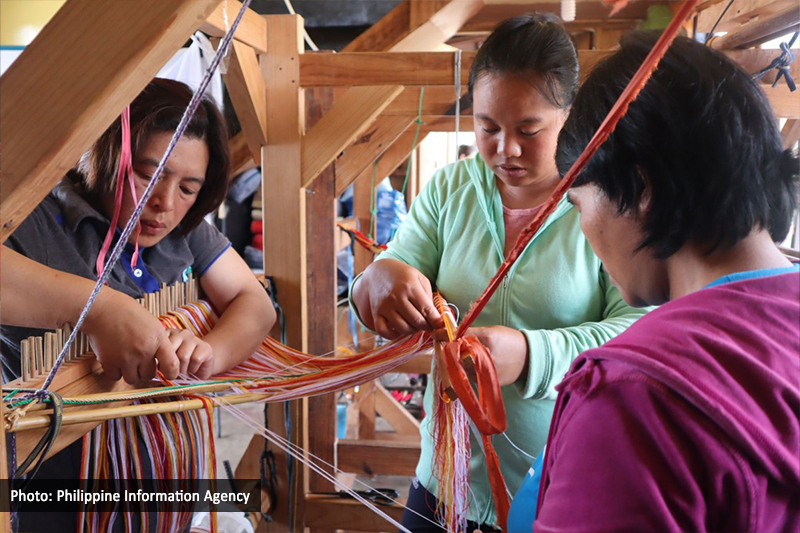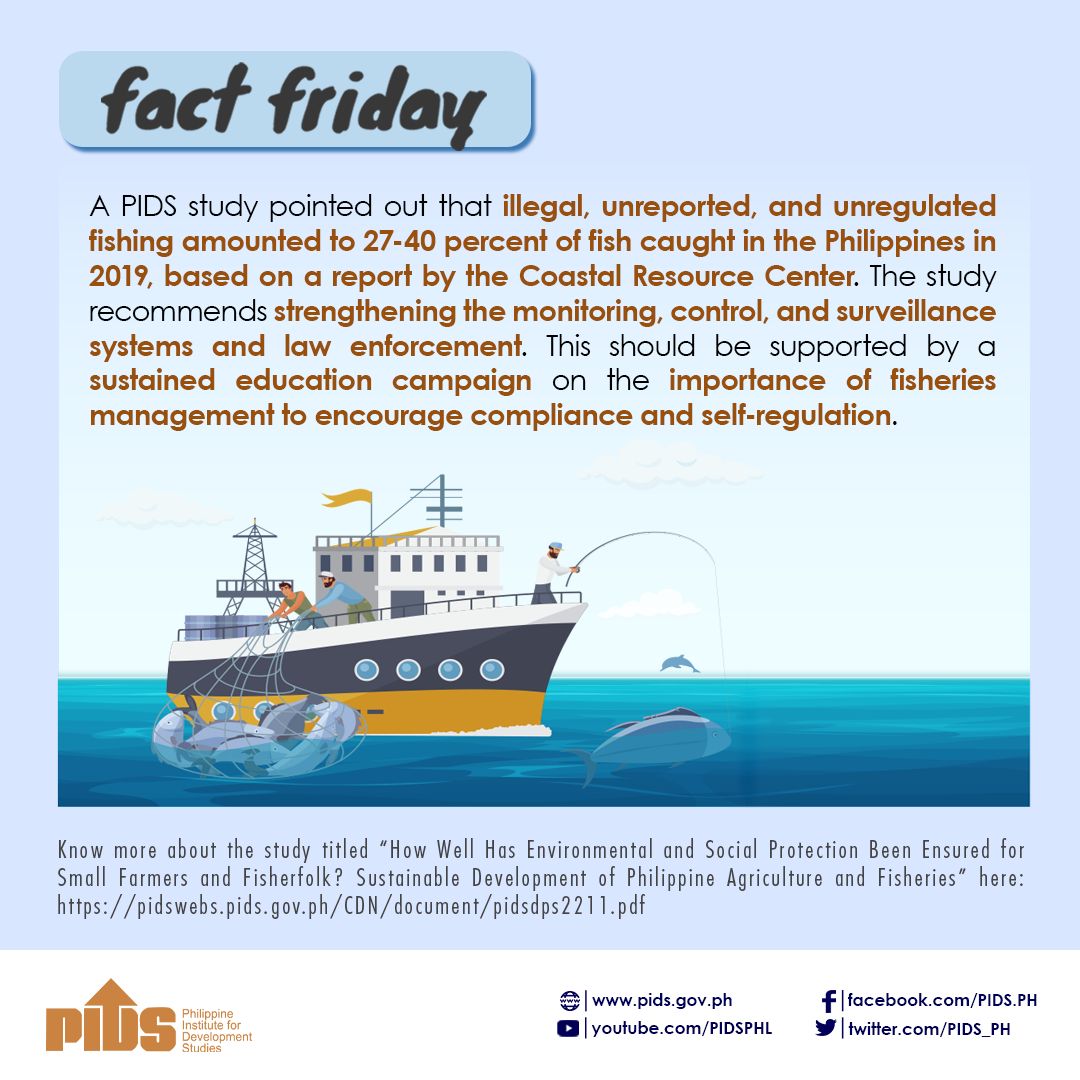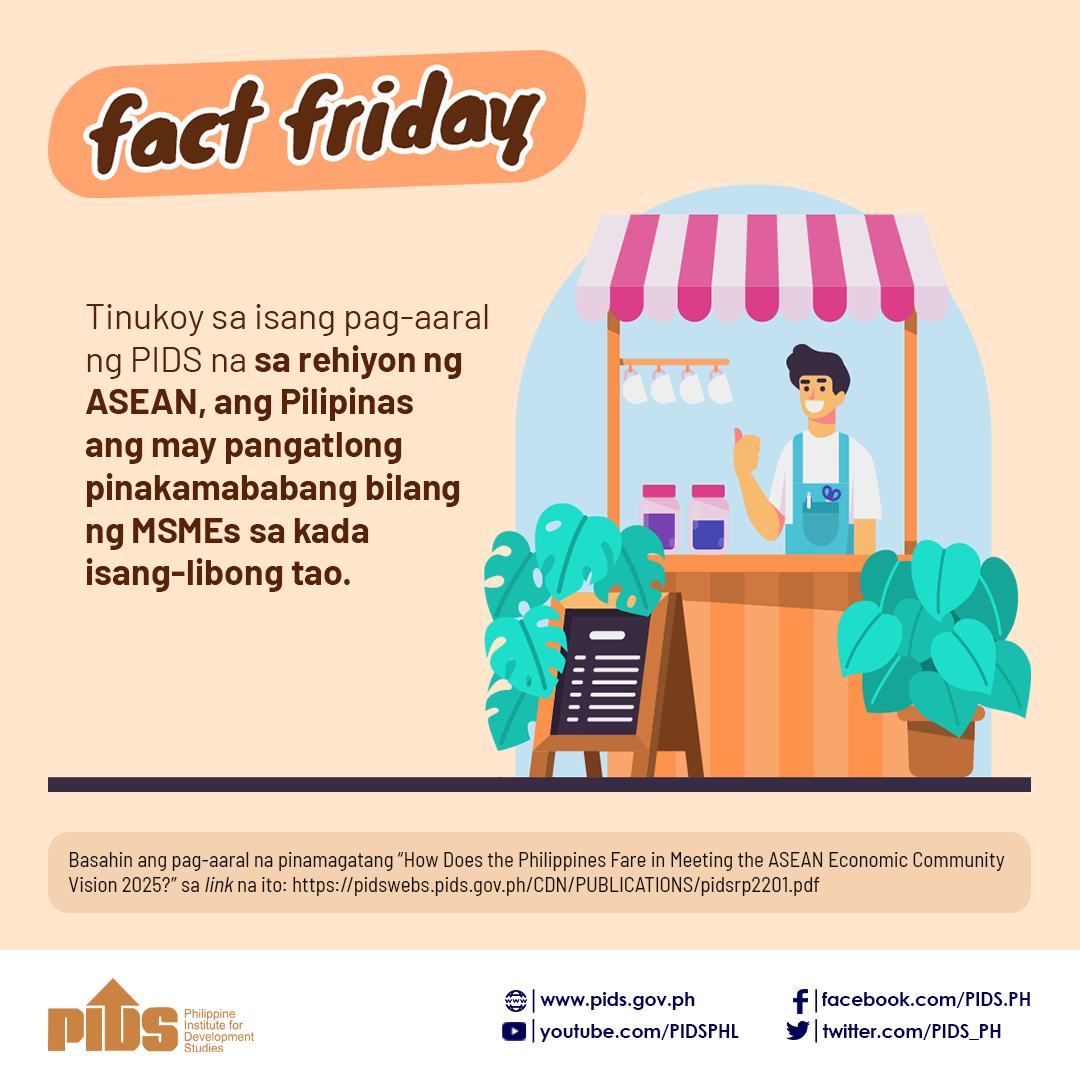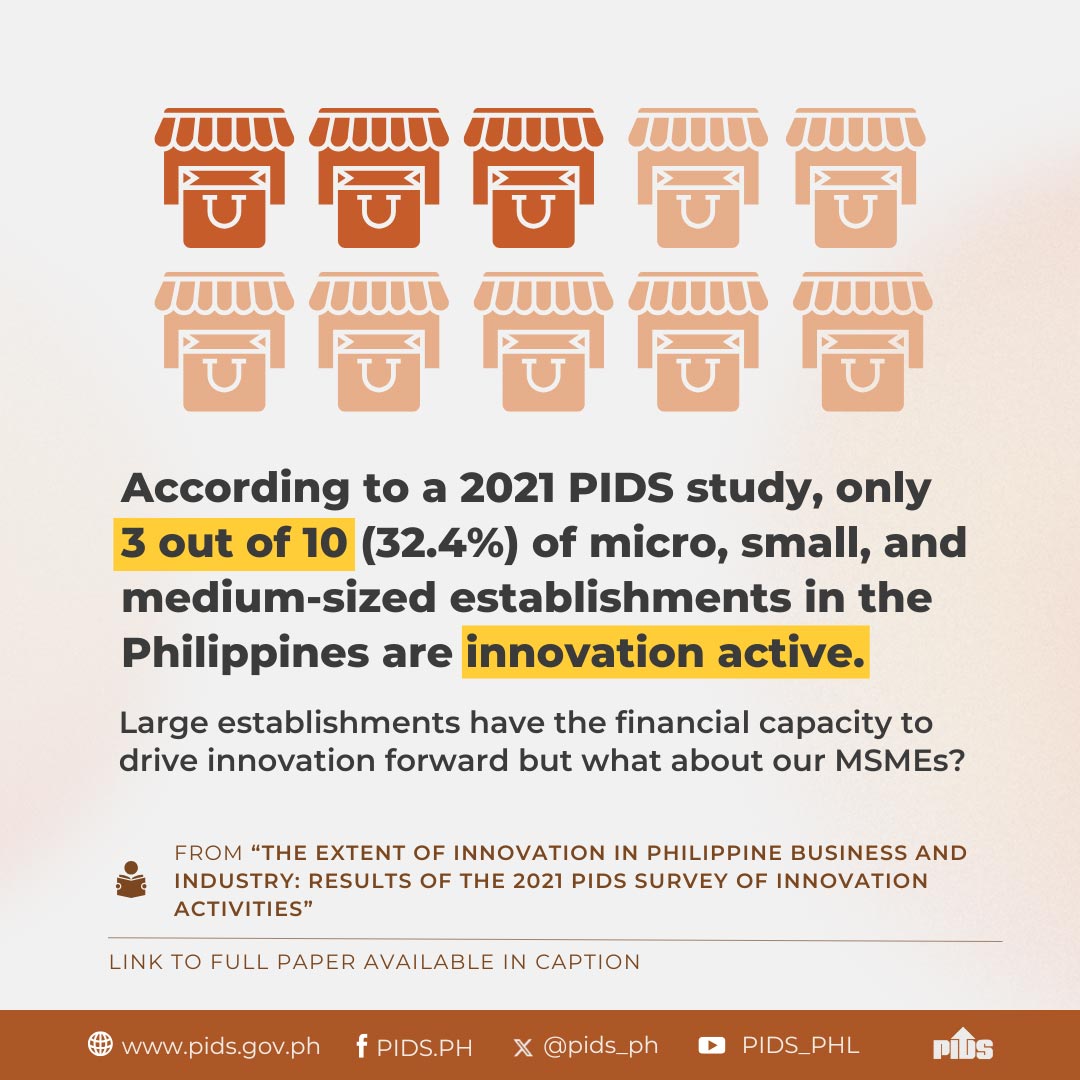MANILA, Philippines – Olivene Gozar and her partners opened Smoky’s, a restaurant on Visayas Avenue in Quezon City, in February 2020. They were excited, she recalled, as the venture raked in P300,000 in revenues in a month. Gozar and her partners were optimistic they would recover their investments within six months and open a second branch within the year.
Then the COVID-19 pandemic struck. From mid-March to May 2020, Smoky’s had to cease operations because of strict lockdowns under the enhanced community quarantine (ECQ). The restaurant reopened in June that year after the restrictions were eased.
With the restaurant closed for months, Gozar and her partners searched for emergency cash assistance. A friend of one of the co-owners referred them to the Bayanihan COVID-19 Assistance to Restart Enterprises or “Bayanihan Cares” Program, a collateral- and interest-free loan program offered by the national government to help struggling micro, small, and medium enterprises (MSMEs).
Bayanihan Cares was allocated P10 billion in funding under Republic Act 11494 or the Bayanihan to Recover as One Act, the follow-up stimulus budget measure known as “Bayanihan 2.”
However, the government failed to hand out the full P10 billion more than a year after the Bayanihan 2 law expired. State auditors found that tedious application processes discouraged small businesses from taking out emergency loans.
The government was able to release P6,727,009,499, considerably less than the total amount allotted under the Bayanihan 2 law. The amount reached 39,323 MSMEs, less than 5% of the total 957,620 MSMEs registered in 2020.
Sergio Ortiz-Luis Jr., president of Philippine Exporters Confederation (Philexport), said the number of enterprises reached by the Bayanihan Cares program was too small.
“Tip of the iceberg,” he said, pointing out that about half of MSMEs were in a dilemma over whether to reopen or not.
Bayanihan Cares, with its P10-billion funding, was meant to revive the Philippine economy by providing financing to struggling MSMEs. Small businesses, after all, are the backbone of any economy, and the Philippines is no exception. According to data from the Philippine Statistics Authority (PSA), MSMEs accounted for 99.51% of businesses in the Philippines in 2020.
A study titled “COVID-19 Impact on Micro, Small, and Medium-Sized Enterprises under the Lockdown: Evidence from a Rapid Survey in the Philippines,” conducted by the Asian Development Bank (ADB), showed that seven out of 10 MSMEs were forced to stop operating for weeks after lockdown measures were implemented.
These closures severely affected the Philippine economy as MSMEs accounted for 35.7% of economic activity in 2020, according to the Department of Trade and Industry (DTI). Gross domestic product (GDP), a measure of economic output, dropped by 16.5% in the second quarter of 2020.
Small business closures also resulted in higher joblessness as MSMEs accounted for more than 60% of total employment in 2019. Unemployment rose to 17.7% as 7.3 million workers were unemployed in April 2020, or more than three times the 5.1% unemployment rate recorded in the same month of 2019. In January 2020, two months before the lockdowns, the jobless rate stood at just 5.3%.
MSMEs are typically more vulnerable to downturns than their larger counterparts, especially since small enterprises have limited access to finance. MSME owners pointed to financing subsidies and access to finance when asked how the government could help them recover from the downturn, according to the study, “Road to Recovery and Resilience for Philippine MSMEs During the Covid-19 Pandemic,” published by the Asian Institute of Management’s Rizalino S. Navarro Policy Center for Competitiveness.
‘Bayanihan Cares’
Gozar applied for a Bayanihan Cares loan in October 2020 and received P400,000 two months later. “What we wanted were grants, but since it was a no-interest loan, we thought we could afford to repay it,” Gozar said in Filipino.
Bayanihan Cares was administered by Small Business Corp. (SBCorp), a government financial institution under the DTI tasked to help MSMEs.
The Bayanihan Cares Program was an offshoot of SBCorp’s existing program called “Pondo sa Pagbabago at Pag-asenso Enterprise Rehabilitation” or P3-ERF, which gave affordable micro-loans to enterprises at a low monthly interest. The program was intended as an alternative lending facility to micro business owners, who would otherwise resort to usurious “5-6” lending schemes.
The program was launched in May 2020 with a P1-billion fund. With the passage of Bayanihan 2, it was given P10 billion in funding and renamed Bayanihan Cares.
Under Bayanihan Cares, MSMEs could loan as little as P10,000 to as much as P5 million at zero interest, with no collateral required. The program also provided a grace period for repayment of up to 12 months.
Of the P10 billion, P6 billion was allocated to the tourism industry under the Cares for Tourism Rehabilitation and Vitalization of Enterprises and Livelihood (“Cares for Travel”) while the remaining P4 billion was intended for various sectors.
From P10B to P8.08B
Of the P10 billion allocated to Bayanihan Cares, only P8.08 billion was downloaded by the Department of Budget and Management (DBM) to SBCorp, however.
Because the money came in the form of capital infusion, the amount that could be taken in by SBCorp was limited by its authorized capital stock, Budget Assistant Secretary Rolando Toledo said in an email to the Philippine Center for Investigative Journalism (PCIJ).
Authorized stock is the maximum number of shares a company is legally allowed to issue or offer to investors based on its charter.
“Out of the total authorized capital stock, the issued share capital or the maximum number of shares that the SBCorp offered for sale to investors was only P8.080 billion. This implies that the maximum capital that the national government is allowed to transfer or infuse is only pegged at P8.080 billion,” Toledo said.
SBCorp appealed the decision, arguing that, under accounting standards, the company could still take in more capital infusion in the form of additional paid-in capital. This was also indicated in the Implementing Rules and Regulations of the Bayanihan 2 law concerning SBCorp, signed by SBCorp and the DTI.
The implementing rules pertaining to SBCorp state: “Any excess at par value shall be treated as a share premium resolution to an additional paid in capital (APIC) of SBCorp. This initial APIC can later act as a safety net against expected further losses in net income arising from the mandated objective, purposes and features of the CARES program under the Bayanihan to Recover as One Act. This is in consonance with the purposes of APIC, which is to provide a layer of defense against potential losses.”
Angelito Acupan, SBCorp’s head of planning and management, said: “It’s not just paid-in capital that we can do what we want. The purpose is to protect the equity. There is basis for the infusion of the full P10 billion.”
The rules also provided for a “pandemic subsidy” in the form of credit risk and funding support “[i]n the absence of direct government credit risk subsidies to support the mandated direct lending of SBCorporation to high-risk industries and sectors negatively impacted by the COVID-19 pandemic.”
Talks went back and forth, SBCorp officials said, until the Bayanihan 2 law expired on June 30, 2021.
“[T]hat argument (on capitalization) became moot when the law expired. There is no reason for this fund for the pandemic because the law authorizing us to assist MSMEs under special terms expired,” said Robert Bastillo, SBCorp head of innovation and advocacy.
SBCorp president and chief executive officer Ma. Luna Cacanando said the issue of unreleased funds for SBCorp was between the national government and Congress.
For Stella Quimbo, an economist who represents the second district of Marikina in Congress, SBCorp didn’t need to increase its authorized capitalization for DBM to download the full P10 billion.
Quimbo, a member of the House of Representatives panel to the bicameral conference committee that crafted the final version of Bayanihan 2, said lawmakers made sure that the language in the Bayanihan 2 law was broadly worded to allow SBCorp to receive the full amount under the law.
The first part of Bayanihan 2’s Section 4 (z) states: “Directing the Small Business (SBCorp) to expand its existing loan programs for MSMEs, cooperatives, hospitals, tourism and OFWS affected by the COVID-19 pandemic and by other socioeconomic reversals, through a combination of increasing available loanable funds, reducing documentary requirements, increasing maximum loan amounts per borrower, reducing interest rates, extending loan terms, utilization of financial technologies to expand reach and increase access and set fast turn-around loan processing time[.]”
Quimbo pointed out that this provision covered other purposes that could be funded by the P10-billion allocation.
“In short, you can transfer direct subsidies to SBCorp to increase their capacity, to expand the reach of their loan programs. The money is not just to increase the amount of loanable funds. There are other things you can support. So, for me, it’s not enough justification that you didn’t download the P10 billion because you failed to increase the authorized capitalization,” Quimbo said in a mix of English and Filipino.
However, blaming only the budget department would be unfair, as a substantial portion of the P8.08 billion downloaded to SBCorp for the Bayanihan Cares program remained unspent, Quimbo added. “It’s very difficult to say that DBM was at fault, right? Because SBCorp didn’t fully utilize the funds.”
In an email interview, Sen. Juan Edgardo “Sonny” Angara, chairman of the Senate panel during bicameral deliberations on the Bayanihan 2 law, said it was reasonable for DBM not to download the remaining amount to SBCorp given the slow uptake of loans.
“In view of the less-than-ideal rate of disbursement and the immediate need for assistance of other Filipinos adversely affected by Covid-19, DBM was constrained from favorably considering the request of SBCorp for the full release of P10 billion. The Department acted reasonably in this instance,” he said.
The DBM, however, said its decision not to download the full amount was solely due to the limitation imposed by SBCorp’s authorized capital stock.
Underutilized funds
When the Bayanihan 2 law expired on June 30, 2021, SBCorp had utilized only P3,101,558,265 or 31.02% of the P10 billion allocated, according to a February 2022 Commission on Audit (COA) report.
The underutilization of funds was due to the slow uptake of Cares for Travel, which originally had a P6-billion share out of the P10-billion fund, SBCorp officials pointed out.
“The funds would have been fully utilized if they were opened to multisectoral loans,” Cacanando said.
As of July 15, 2022, 749 loan applications have been approved under Cares for Travel, totaling P335,768,604.
Bayanihan 2 was silent on the distribution of funds to tourism enterprises and multisectoral loans. It was the bicameral conference committee that decided to allocate 60% of the fund to tourism enterprises, Angara said.
Angara said Congress was aware that tourism MSMEs were cautious over getting loans. However, the Department of Tourism (DOT) wrote to Congress asking for working capital loans and other credit facilities for tourism businesses, he said.
“P6 billion was deemed appropriate by Congress to allot to tourism-related enterprises under the SBCorp CARES Program–a decision buoyed by the letter from the DOT mentioned, previously underscoring the need to immediately provide the tourism industry with access to working capital loans and other credit facilities to help them recover soonest,” the senator said in his email to PCIJ.
When DBM decided not to release P1.92 billion in remaining funds, SBCorp had to amend its memorandum of agreement (MOA) with the DOT. From the original P6 billion, the allocation for Cares for Travel was reduced to P4 billion.
SBCorp officials pointed out that the money for Cares for Travel could not be re-directed to multisectoral loans or other programs without the approval of the DOT.
“We never really knew when the lockdowns would end. It was a series of lockdowns. If we had known that there would have been no lockdown then we would have pressed DOT to push the product, and if they could not, then we could have negotiated earlier to open it up to [multisectoral loans].… So we just cannot unilaterally use the [funds],” SBCorp’s Bastillo explained.
The original agreement between SBCorp and DOT was supposed to be valid until December 31, 2022, or until all funds for Cares for Travel ran out.
The agreement has been revised to allow SBCorp to utilize the unspent funds for Cares for Travel for multisectoral MSMEs after December 31, 2022. “The amendment to the MOA between SBCorp and DOT was primarily necessitated by the continued sluggish demand for loans from tourism MSMEs,” said Acupan of SBCorp.
However, the multisectoral loans might no longer be interest-free, said Acupan. But this will still be decided by the SBCorp board of directors, he said.
For its part, the DOT said it had anticipated a fast uptake of loans from tourism-related enterprises due to numerous requests for financial assistance in 2020.
“With the strong clamor for fiscal assistance that the Department received from our stakeholders at the height of the pandemic, the DOT anticipated that the CARES for TRAVEL Program would be received positively and would have a high uptake,” it said in an email to PCIJ.
However, tourism-related enterprises later became hesitant to apply for loans due to the uncertainty brought by continuous lockdowns, high COVID-19 infection rates, and continued travel restrictions.
Tourism enterprises may have obtained financial assistance from other sources, the department said. Others adopted a wait-and-see attitude or avoided taking out loans for fear of another fortuitous event.
The DOT clarified that it exerted numerous efforts to promote the loan program. A total of 21 “DOT Cares for Travel Webinars” were conducted from October 2020 to December 2021, it said.
Effective interest rate
Although Bayanihan Cares was marketed as an interest- and collateral-free loan, borrowers still had to pay an effective interest of 2% to 4% per annum as SBCorp charged processing fees of 4% to 8% depending on the loan terms, according to state auditors.
Gozar said that for her loan of P400,000, payable in four years, she was charged an 8% one-time processing fee equivalent to P32,000, which was deducted immediately.
“Aren’t they earning from the service charge? Come to think of it, the service charge was already the interest,” she said.
MSMEs should not have been asked to pay processing fees, Philexport’s Ortiz-Luis said. “The money ideally should have been given away, but they turned it into a loan, resembling commercial practice. The servicing fee was high.”
SBCorp officials, however, said the corporation could not afford to waive processing fees as the funds it had received from the government did not include mobilization costs. “The funds were in the form of equity so there were no funds for mobilization),” Cacanando, the SBCorp president, explained.
A Performance Audit Report on the Bayanihan Cares program by COA showed that the program’s effective lending interest rate per annum of 2% to 4% was already below market rates. SBCorp officials also pointed out that even at the higher end of the one-time processing fee of 8%, the effective lending interest rate would be at just 2% per annum, still lower than industry rates.
According to the Bangko Sentral ng Pilipinas (BSP), effective lending interest is computed by considering the interest rate, service charge or processing fee, and other fees and charges incidental to credit extensions such as notarial fees, appraiser fees, and documentary stamps.
“We needed to pay for the account management functions but there was no interest charged. We could have charged 2% per annum, and the effect would be the same. We just charged a service fee so the loan would still be pegged as interest-free,” Bastillo said.
The high processing fees, however, could have contributed to the low takeup. A survey by state auditors found that some respondents were hesitant to proceed with their loan applications due to the processing fees imposed by SBCorp.
Quimbo said that ideally MSMEs should not pay processing fees for loans.
She pointed out that the House’s original version of the stimulus package bill, House Bill 6815 or the “Accelerated Recovery and Investments Stimulus for the Economy of the Philippines” (Arise) bill, had provisions for administrative costs.
The Arise bill, passed by the House in June 2020, was a P1.3-trillion economic stimulus bill aimed at accelerating recovery and improving the viability of enterprises. HB 6815 allotted P45 billion for 2020 and another P25 billion for 2021 in special COVID-19 loans for small businesses.
Quimbo said the Arise bill had a provision for the government to shoulder the administrative costs of loan programs for businesses. The provision was not adopted when both houses reconciled their differing versions of the financial stimulus bill, due to limited funds.
“It was very clear on the part of Congress that there was a need to do so. But, again, when we got to Bayanihan 2, it was lost.”
She, however, stressed that MSMEs still benefited from the Bayanihan Cares program despite the processing fees imposed. “Let’s admit that it was less than perfect. We wanted it to be way better but, ultimately, I think MSMEs still benefited,” she added.
But for Gozar, a zero effective interest rate would have been more beneficial for struggling businesses. “That processing fee could have been used to pay for electricity. That’s how business owners think.”
Hand-holding MSMEs
More efforts from the government are needed to make loan programs successful, an economist interviewed by the PCIJ said.
Francis Quimba, research fellow of the state-run Philippine Institute of Development Studies, said it was necessary to teach small businesses, especially in the informal sector, how to register and apply for loans.
“Loan programs also don’t succeed because MSMEs don’t know how to apply for these or couldn’t be bothered to do so. That’s why you need mentoring for these types of activities,” he said in Filipino.
In a survey conducted by state auditors, three out of six MSMEs reported that their loan applications were canceled as of June 30, 2021, citing difficulties in collecting and submitting documents. Two out of six MSMEs experienced technical challenges during loan application. Two out of 10 MSMEs whose loans were disapproved had difficulty gathering and submitting documents or had technical difficulty during the loan application process.
The tourism department, in its email to PCIJ, said the lack of internet or poor connection also contributed to the slow uptake of the Cares for Travel program.
Quimba pointed out that, for many micro enterprises, especially those in the informal sector, complying with business requirements could be tedious. “What do you expect from micro entrepreneurs who are more focused on keeping the business afloat? So, for a lot of them, the administrative side can be quite difficult,” he said.
Quimbo also said majority of micro enterprises in the informal sector were unbanked and unregistered, which was why many were averse to taking out loans or found the loan application process too challenging. “They are really on the financial laylayan (fringes), right? I cannot imagine them filling out an application form and saying, ‘Can I borrow 50,000?’”
Hand-holding for MSMEs, especially in the informal sector, is necessary. This requires peddling the loans to unregistered MSMEs at the barangay (village) level and encouraging them to register their businesses so they could avail themselves of government support, Quimbo explained.
It’s also important, said Quimba, to scrutinize how loan programs such as Bayanihan Cares were implemented. A better approach to helping MSMEs, too, would be to implement programs according to each industry’s needs and enterprise size, he added.
“For example, loans shouldn’t be designed as one size fits all…. Their (enterprises) characteristics are different, their requirements are different, and their capability to adapt and to change, and their resources are actually very different.”

